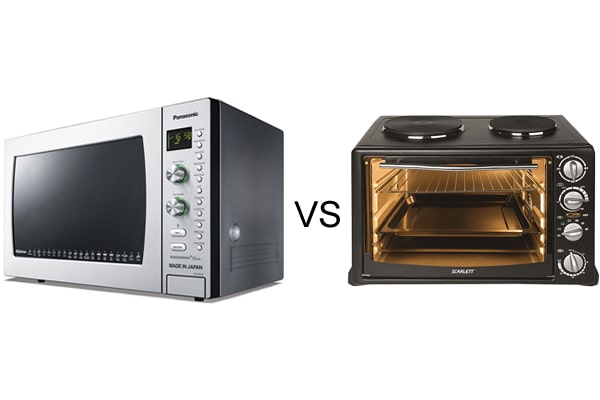Plastics are part of our daily lives. They are preferred over other ingredients because they are safe to use, strong, durable, convenient, versatile, and light to handle. However, many fail to understand that there are different categories of plastics with distinct properties, benefits, and curing processes. In our today’s page, we narrow down; thermoset and thermoplastic.
Although these terms sound the same, they are different regarding their individual properties, application, and behavior when subjected to heat. I must admit that thermoplastic was initially the most common plastic in manufacturing. Later, thermosets emerged with more appealing properties and advantages. However, they are both in the market and used in different situations. In this article, we shall take a closer look at the differences between thermoset and thermoplastic for a better understanding.
What are Thermoset Plastics?
Also known as thermosetting polymers or thermosetting plastics, these are basically materials with high melting points and usually become set in their chemical and physical properties after initial heat treatment.
Characteristics
- They are hardly affected by any additional heat exposure. In fact, the behavior of these plastics can be likened to boiling an egg. Once you boil an egg, it hardens, and any additional heating does not alter its configuration.
- Generally, polymers within these materials usually cross-link during the curing process, thus forming irreversible and unbreakable bonds. As a result, thermosets will hardly melt even when you subject them to extremely high temperatures. A good example of thermoset plastics includes silicone, phenolic, epoxy, polyurethane, and so on. Polyester has also proved to contain some characteristics exhibited by thermosets. However, it can still behave like a thermoplastic.
- Besides the characteristic mentioned above, components of thermoset polymers and plastics are usually stored in a liquid form. In most cases, they are stored in large containers or tanks. Due to the characteristics mentioned above, thermosets are commonly used to make production materials. A good example is;
- Phenolic which is known to be flame resistant.
- Epoxy is basically elastic and resistant to a number of chemicals.
- Polyurethane is another thermoset plastic that is used for making coatings and foam seals. Besides these items, polyurethanes are used to make synthetic sponges and the wheels of grocery shopping carts.
- Vinyl Ester is another thermoset plastic that is used to create coatings and laminates as it offers the much-needed heat protection.
- Finally, it is essential to note that thermoset plastics usually have a good dimensional stability and a flexible design. Apart from this, they are relatively cheaper than thermoplastics.
Benefits of Thermoset plastics
- Highly resistant to water and corrosion effects.
- They can withstand high temperatures.
- They are very rigid and hard in nature
- Available in several colors and surface finishes.
- Relatively cheap compared to their peers.
- They come in highly flexible design
Drawbacks of Thermoset plastics
- They cannot be recycled.
- They are so hard to remold to desired designs
What are Thermoplastics?
Unlike thermosets, thermoplastics are forms of polymer that usually maintain the same chemical properties in a liquid or a solid form. As a result, they can either be in a liquid state or a solid state, depending on the prevailing temperatures. For instance, if you subject thermoplastics to high temperatures, they will melt and become liquid.
Characteristics
- Once they are subjected to cold temperatures, they usually solidify. In fact, thermoplastics can be likened to butter, which can exist both in a liquid and solid state. It all depends on the temperatures it is subjected to.
- Like we mentioned above, the chemical structure of these plastics remains the same, despite the changes in temperature. Whenever manufacturers want to buy thermoplastics, they usually buy tiny plastic pellets. These pellets are then heated to become liquid. After that, the molten plastic is poured into a mold, where it is later cooled down to form objects of different shapes.
- Unlike thermoset plastics, thermosets can be reheated and remolded as one wishes without necessarily altering their physical and chemical properties. This makes these plastics ideal for recycling. This goes a long way in conserving the environment.
- The versatility that comes with thermoplastics is unmatched. A good example of thermoplastic polymers includes polyethylene, nylon, PVC, and Teflon. Other common thermoplastics that you should know include:
- ABS – which is used to make keyboard keycaps and also LEGO blocks, and automotive spare parts.
- Polycarbonate – which is used for making food storage containers and water bottles. Since this material is known to be impact resistant, it is usually used to make bulletproof glass
- Acrylic – which is used to make terrariums, aquariums among other consumer goods.
From making clothes to carpets, the above-mentioned manufacturing materials are used to make several products used on a daily basis.
Benefits of Thermoplastics
Thermoplastics come with a lot of benefits. These include:
- They can be recycled
- Thermoplastics are very resistant to impact, corrosion, and chemical exposure
- Ideal for storing food items
- They can be reshaped or remolded
- These plastics are highly customizable and have anti-microbial finishes
- They can be blended with rubber and other materials to make them stronger and more flexible.
Drawbacks of Thermoplastics
- They can easily melt when exposed to high temperatures.
- Potential health hazards due to toxic fumes
Other Differences Between Thermoset and Thermoplastic
1. Curing process
During the curing process, the plastics mentioned above behave differently. Like we mentioned above, thermosets usually contain polymers that cross-link together during the curing process. As a result, they form a chemical bond that is irreversible by nature. In this case, this product can hardly melt even when you subject it to higher temperatures.
On the other hand, thermoplastics usually soften whenever they are heated and become liquid. Unlike thermoset plastics, the curing process for thermoplastic is reversible. This is because no chemical bonding takes place despite the temperature changes. As a result, thermostats can be remolded the way one pleases.
2. Features and Benefits
Materials that are made of thermoset plastics tend to have an improved heat and chemical resistance. As a result, this product is used to make sealed products since it is resistant to any form of deformation. On the other hand, thermoplastic resins made tend to have a high shrink resistance and can easily bend. Besides this, these materials offer high strength compared to their peers. As a result, this material is used to make plastic bags or any material that needs to withstand any form of mechanical stress.
3. Ability to be recycled
Like we mentioned above, thermoset plastics can hardly be recycled. As a result, they are not ideal as far as environmental conservation is concerned. On the other hand, thermoplastics can easily be remolded and recycled. This makes them ideal when it comes to environmental conservation.
4. Versatility
As far as versatility is concerned, you will note that thermoset plastics are versatile. The fact that they don’t wrap, deform or reshape makes them a great deal in many industries. However, thermoplastic are more versatile than thermoset since they don’t have strong chemical bonds. This makes it easy to remold into different designs thus a candidate to multiple applications.
5. Heat resistance
Due to the cross-linking process, thermoset plastics tend to be more heat resistant compared to their peers. As a result, they are used to make high-heat applications such as appliances and electronics. On the other hand, thermoplastics are not heat resistant and can melt when subjected to high temperatures.
6. Cost
If you are operating on a budget, thermoset plastics are the best option for you. However, if you have more resources, you should go for thermoplastics. In any case, thermoplastics are known for recyclability and versatility. These characteristics make them a bit costly but worth the money.
Final Thoughts
Do you find it hard to distinguish between these two plastics? If yes, then as seen above, thermoset plastics and thermoplastic are different in several aspects. From their curing process to their aesthetic advantages, these types of plastics are different from structural applications. Before you use any of these plastics to make different products out there, it is imperative to note the above differences to get the desired results. Generally, the plastic of your choice will be largely be based on the final application and the product’s specifications. Note these differences today, and you will make the right choice when choosing the right plastic for your product.





